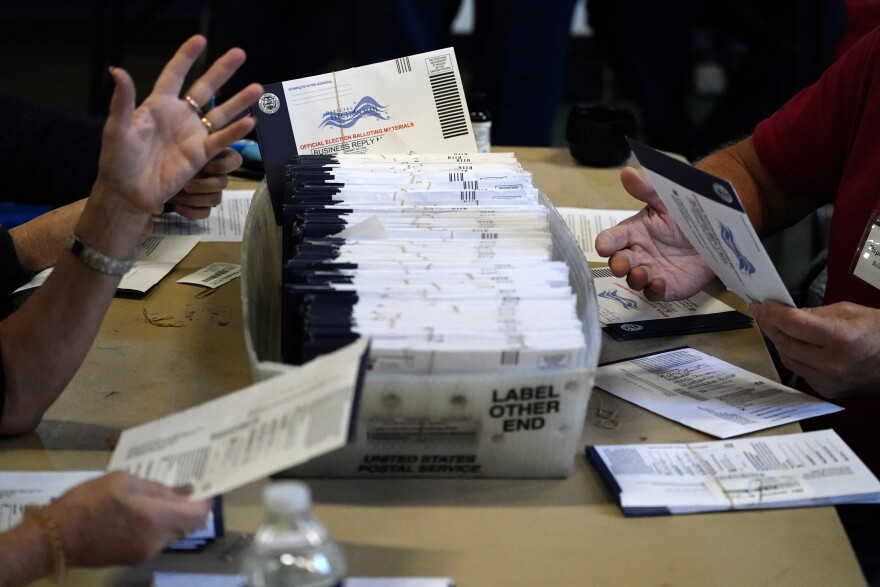Some Pennsylvania voters who apply for mail-in ballots online could run into a technical problem verifying their signature – depending on what they use to apply.
Mail-in voters are supposed to include their state Department of Transportation-issued driver’s license or ID card number on their ballot application. Voters who don’t have either are supposed to use their last four Social Security numbers and take a picture of their signature when they apply online.
State law requires county election officials to verify a person’s signature before sending a ballot out, and they usually check the signature that appears on a PennDOT document against whatever they have on file.
But when Gar Vacchiano of Conewago Township in Dauphin County tried applying for a primary ballot recently, he said he initially thought he had to upload a photo.
“You sign a white piece of paper, take a picture and then send it in,” Vacchiano said. “I got back [a] DPI requirement, which…didn’t make any sense to me.”
The online system, which is maintained by the Department of State, kept rejecting his photo. It told him the picture needed to have at least a 96 dots-per-inch print resolution.
Agency spokeswoman Ellen Lyon explained the requirement in a statement.
“The Department of State implemented quality control measures for online voter registration and online absentee ballot application to ensure that each signature image is of good enough quality to be accepted by the county election office,” Lyon said. “These measures include specific image formats and a minimum resolution quality.”
Vacchiano said the issue was all the more frustrating for him because his Samsung phone already has a 12 megapixel camera, which he argues should produce high-enough quality images to meet the requirement.
“If this phone does not have adequate resolution, I doubt 99.9% of the others do either,” he said.
Lyon said the “overwhelming majority” of signature pictures can and have been uploaded correctly. But any mail-in voters experiencing photo upload issues should instead fill out a paper application and return them in-person or by mail to their county election office. Those applications can mostly be filled out using a computer and have a spot to allow a voter to sign their name by hand.
Counties can also mail voters a separate “missing signature” form to help them meet the verification requirement.
Vacchiano said he ultimately applied for his mail-in ballot using his driver’s license, saying he might have read the requirements “incorrectly” when he first tried. But the experience raised other questions for him.
“How are they [county election officials] reviewing the signatures on the other end? Is there a standard way that they’re looking at [them]? Is there an automated system?”
Dauphin County Elections Director Gerald Feaser said counties are required to accept any handwritten signature that a voter sends in, as long as all the other information submitted matches what the county has on file.
He added most county voters who apply for mail-in ballots supply PennDOT license or ID numbers for signature verification.
Signature verification was a key issue for election officials in the lead-up to the 2020 election. Republicans and former President Donald Trump’s campaign argued that a voter’s signature on their ballot application and registration legally had to match the signature provided on the outer envelope of their ballot in order to be counted.
Pennsylvania’s Supreme Court weighed in on the matter in October of that year, ruling that while signature verification is required, counties are prohibited “from rejecting absentee or mail-in ballots based on signature comparison conducted by county election officials or employees, or as the result of third-party challenges based on signature analysis and comparisons.”
Voters have until May 10 to apply for a mail-in ballot for the primary, currently scheduled for May 17.




